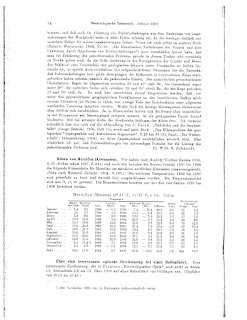The classical form of rarely observed Bottlinger's rings is an elliptical ring around subsun, sighted normally from an airplane. Their occurrences can be very short, just a couple of seconds. This is because suitable crystal areas are often small and pass swiftly under fast the moving aircraft. Bottlinger's rings have been seen twice also in diamond dust with floodlight as a light source. Formed this way, they look very different from the classical Bottlinger's rings. All together about 10 observations of Bottlinger's rings are known.
Above are shown three cases of Bottlinger's rings. First one is from the book "Clouds of the World" by Richard Scorer, published in 1972. The photographer is not known, the photo was taken near Des Moines, Iowa. The phenomenon is well defined and taking into an account that this is a printed photo, it must have been an impressive Bottlinger to look at. (The book by Scorer is a nice item to have in collection. It has 22 halo photos including the famous black and white "76° halo" photo in the Antarctic by Scorer himself. There are plenty of cheap second hand copies available.)
Second photo shows Bottlinger's ring over Cornwallis Island in the Canadian high artic on 16 April 1999. Leena Virta and I had hitchiked a ride on an airplane that carried supplies to magnetic pole skiing expedition. On a way back we were flying under Ac layer which precipitated ice crystals. Subsun was seen first and I adjusted camera exposure, focus and aperture ready for the Bottlinger, which indeed appeared for about 10 seconds, followed by two other equally brief occurrences. Then the airplane turned so that we lost sight of the subsun, but we were already starting landing to Resolute. It was clear skies in Resolute but luckily the Bottlinger cloud movement was in our direction, and after waiting for a while on the ground, the cloud arrived and elliptical halos were seen around the sun (they were photographed as well, but I can't find those slides right now).
The third case in the above gallery was seen from Yakutsk-Moscow -flight on 3 March 1997, 4 hours and 20 minutes after departure, somewhere over Siberia. We were returning from the Oymyakon halo expedition and all of us three were having window seats. First time the Bottlinger flashed we were sort of asking each other "did you see what I think I saw"? We continued looking and the Bottlinger appeared again, and this time it was better. Jarmo was keeping the camera at the window ready and got a photo, though not from the best moment.
Three explanations have been proposed for Bottlinger's rings. One, suggested by Bottlinger himself, is that plate like crystals fall in pendulum motion. The 1910 article by Bottlinger in Meteorologische Zeitschrift is given above. Second theory is that crystals fall in gyrating mode. This was proposed by Lynch, Gedzelman and Frazer in 1994. A figure depicting the pendulum and gyration motions of the crystals and the resulting simulated Bottlinger's rings from their paper is shown. Third model gives low angle pyramidal crystals as an explanation for Bottlinger's rings. This was brought forward by S. W. Visser in 1961 to explain elliptical halos; in 1999 Sillanpää et. al. extended the idea to Bottlinger's rings.
Now which one is right? I go for the Visser-Sillanpää model although low
pyramid angles are not theoretically favourable. It is the only one
that explains also nicely the elliptical halos. With gyration model
multiple scattering should be incorporated, in which elliptical halos
would be Bottlinger's rings caused by the subsun. Sillanpää et. al. has
shown that elliptical halo shapes and intensities can not be explained
by such a model. There are also other considerations which make the
gyration model weak, but I leave it at that this time.









No comments:
Post a Comment